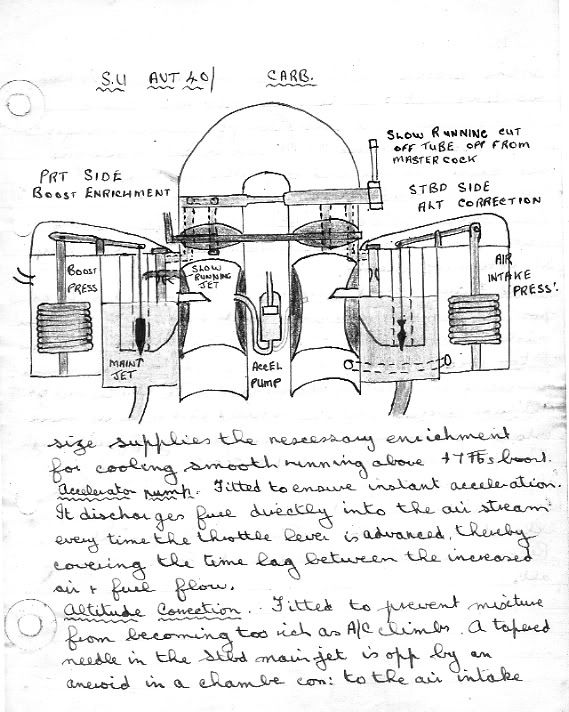THE MYSTERY OF THE UNSTOPPABLE MERLIN.
It seems as if there are no flight engineers or flight mechs out there to answer my question so will now explain why the Merlin engines on a Lanc can refuse to stop. The answer lies in the fact that wherever possible all services were designed to ‘fail safe’. Where a service was operated ,hydraulically, electrically or pneumatically. then when that source of supply failed , the service would automatically revert to the ‘landing’ position. For instance, the super charger had two speeds , M gear, and S gear. The engineer selected S gear above a certain height, if its electro/pneumatic power supply was interrupted it reverted automatically to M gear , ready for landing ( I hope I have got it right) . To finally stop the engines an Idle cut of switch (I.C.O) was switched off (see previous reference to preignition, or running on). However when shut down was required, the fuel was shut off by an electrical current, so, if the electrics were damaged then the I.C.O would remain open and still idle/run.. All the D.C circuits in a Lanc were supplied by four twelve volt batteries in series parallel , which gave an output of twenty four volts D.C ,and could be isolated by a ‘ground to flight switch. We had been told that in an emergency, if we had to lighten the aircraft as much as possible, the batteries and Elsan were the first things to go., and that the starboard inner engine would supply the twenty four volts through the automatic voltage and current controls. This was the knowledge required to answer the question, that was previously asked.
The answer is, that the ground to flight switch (the main electric switch) was accidentally in the off position, but the starboard inner, still running was supplying enough electricity to keep the I.C.Os closed. As the engine slowed down the voltage from the generator dropped at which point the automatic voltage regulator cut out opened . cutting off the electricity . With the electricity off, the I.C.Os opened again , the engine fired up, and then repeated the cycle , until some one switched on the ground to flight switch . I answered this one during my finals, with some difficulty, but got it right in the end. As Cockney Steve will know, on a vehicle the equivalent of an I.C.O is held open by electricity and if the supply is cut , the engine will not tick over.
Probably boring to some , but I wanted to demonstrate the flight engineers did have excellent training as did all other members of the crew. It again shows how efficient the R.A.F education system was, and I hope still is. Pity there are no education types on this site, to explain how they did it.
Just a pic of the Merlin S.U carb, not too complicated , until you consider it has to compensate for altitude, boost, a constant speed propeller., climbing , diving, and varying atmospheric pressure, etc.

I was amused by Cockney Steve’s reference to the word ‘employed’ . He used the word correctly, but somehow I never felt employed, just a member of a very excellent club or association. I would appreciate the views of any other old aviators, on this one.
[